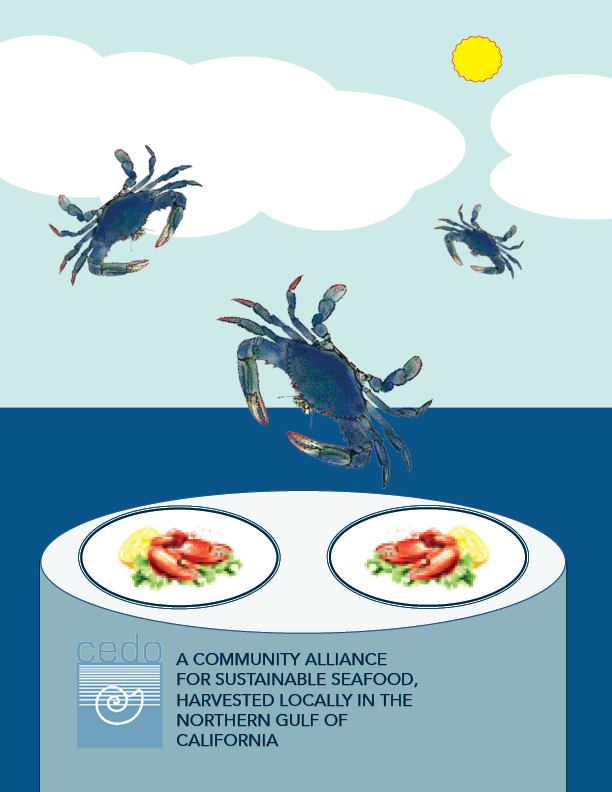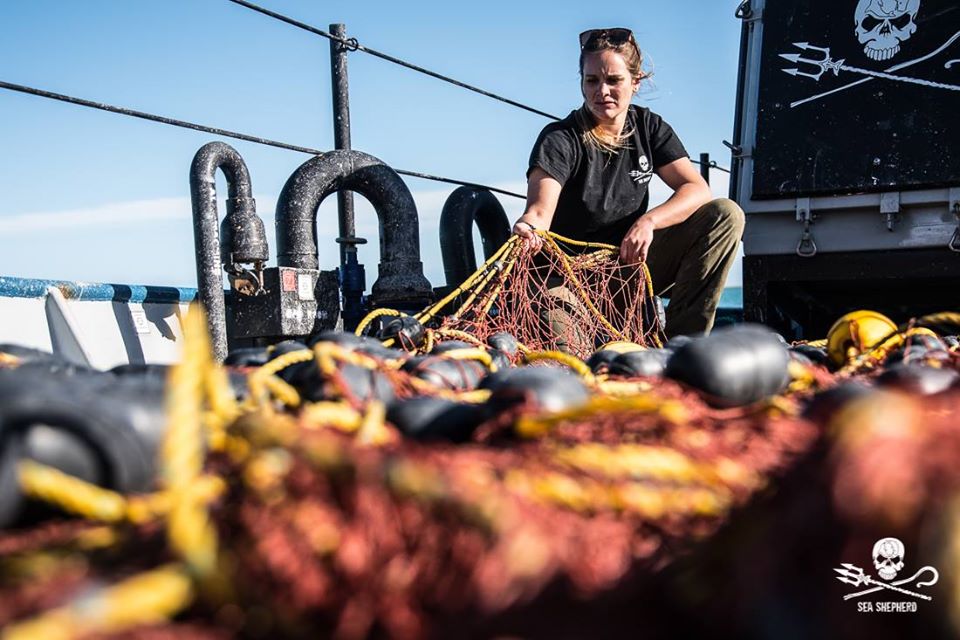CEDO promotes sustainable and profitable fisheries
In coordination with coastal fishermen, the Intercultural Center for the Study of Deserts and Oceans (CEDO) is promoting sustainable fisheries for Puerto Peñasco and the region, reports CEDO Director Nélida Barajas Acosta.
Barajas Acosta, who stepped into the CEDO leadership role in 2019 in the footsteps of founder and Director Emeritus Peggy Turk Boyer, detailed current focus on the Cortez blue swimming crab (Callinectes bellicosus) as well as geoduck (Panopea generosa) aims to regularize traditional fishing in the zone through sustainable means while generating added value for the marketing of these products.

“Ocean to Table” promotes sustainable crab fisheries in Sea of Cortez
The Nov-Dec 2019 “At the Edge of the Sea” newsletter of the Intercultural Center for Desert and Ocean Studies (CEDO) highlights the binational alliance entitled “Mar a Mesa” (Ocean to Table) is working to promote sustainable blue crab fisheries in the Sea of Cortez, which is one of the most important coastal fishery areas along Mexico´s Pacific coast and the Puerto Peñasco – Puerto Lobos Corridor in Sonora.
CEDO is seeking viable solutions particularly through a Fisheries Improvement Project (FIP), which involves registering the blue crab fishery in a publicly accessible online platform at FisheriesProgress.org while working with committed partners. CEDO’s binational collective is known as the Mar a Mesa Sea of Cortez Sustainable Fisheries Alliance, which has the goal of improving every stage of the blue crab fishery along the entire chain of production, from the ocean to the dinner table! It includes well established, local partners like the AZ Sonoran Desert Museum among others.
To sign up for periodic updates from CEDO directly, visit cedo.organd scroll to the bottom of the page to sign up for CEDO E-News.
Six seasons of Operation Milagro removes nearly 200 KM of net from vaquita habitat

During the last six seasons, the Sea Shephard Conservation Society’s Operation Milagro has removed over 1000 pieces of illegal fishing gear from the Upper Gulf of California, home to the critically endangered vaquita (Phocoena sinus). This represents more than 650,000 feet (200,000 meters) of illegal gear, equivalent to over 450 times the height of the Empire State Building!
By the end of 2019, the vaquita marina population had dropped to what is thought to be less than 20 left in existence.
According to the organization, Sea Shephard has been in the Upper Gulf of California since 2015, working in close collaboration with Mexican authorities to eliminate illegal fishing gear that threatens the area. The crew has documented the entanglement of over 7000 animals during this time, with the successful rescue and release of nearly 4000 back into the sea. Of the animals found, “975 of the trapped animals were listed as threatened, endangered, or critically endangered on the IUCN Red List. Over 100 of these at-risk animals were saved.”
PROFEPA lauds government support in protecting Vaquita and Totoaba
By José Antonio Pérez
The Federal Agency on Environmental Protection (PROFEPA) detailed measures to protect the critically endangered vaquita in the Upper Gulf of California, while halting illegal trafficking of totoaba, have achieved a high level of interinstitutional coordination. According to PROFEPA, no other species in Mexico’s history has received such a level of governmental support.
Ending totoaba poaching, argued as associated with the vaquita’s endangerment due to use of illegal gillnets, is complicated as it encompasses the broader topic of international criminal organizations, details PROFEPA. Nevertheless, Mexico sustains broad efforts of cooperation and has requested collaboration from countries used in transit as well as those where totoaba is marketed, along with the rest that make up the International Criminal Police Organization (INTERPOL).
Surveillance measures in the Upper Gulf of California, by land, sea, and from the air from December 2018 to November 2019 included inspection of vessels, as well as inspection points along highways. These efforts have resulted in the removal of 234 pieces of fishing gear, measuring 22,786 meters in length, the decommissioning of two small boats and a vehicle seizure, as well as the decommission of 22 tons of marine product, including 127 bladders and 277 poached totoaba.